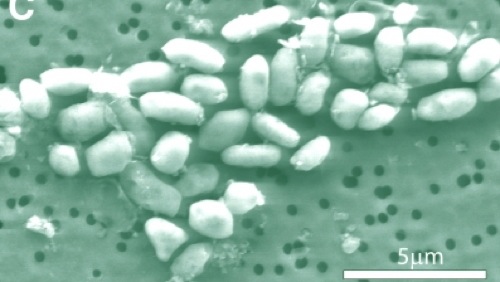Share this:
- Click to share on Facebook (Opens in new window) Facebook
- Click to share on X (Opens in new window) X
- Click to share on Mastodon (Opens in new window) Mastodon
- Click to share on LinkedIn (Opens in new window) LinkedIn
- Click to share on Tumblr (Opens in new window) Tumblr
- Click to share on Reddit (Opens in new window) Reddit
- Click to print (Opens in new window) Print
- Click to email a link to a friend (Opens in new window) Email









Just to be clear – these bacteria aren’t ‘arsenic eaters.’ Instead, their DNA uses arsenic as the structural framework in the molecule. All other life, everwhere else – EVERTHING – uses phosphate to do that in their DNA.
I can’t overstate how big of a discovery this is. It means that the basic building blocks of life just got a lot more expansive.
To be even clearer — this still needs to be confirmed. They claim that they were able to isolate the “arsenic DNA” from the rest of the cell, and it isn’t clear how they could do that and not have the arsenate bonds come apart (that’s a major reason why arsenate is poisonous and can’t substitute for phosphate in typical biochemistry).
Regardless of how that turns out, though, it is all still fascinating and does indeed expand the possible environments that could support lifeforms…
Hmmmm… don’t go re-writing any of those biology textbooks yet!
http://www.slate.com/id/2276919/
http://rrresearch.blogspot.com/2010/12/arsenic-associated-bacteria-nasas.html